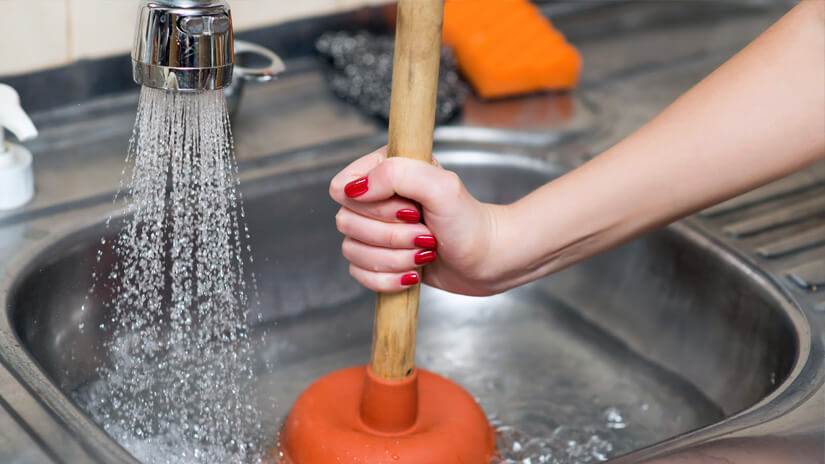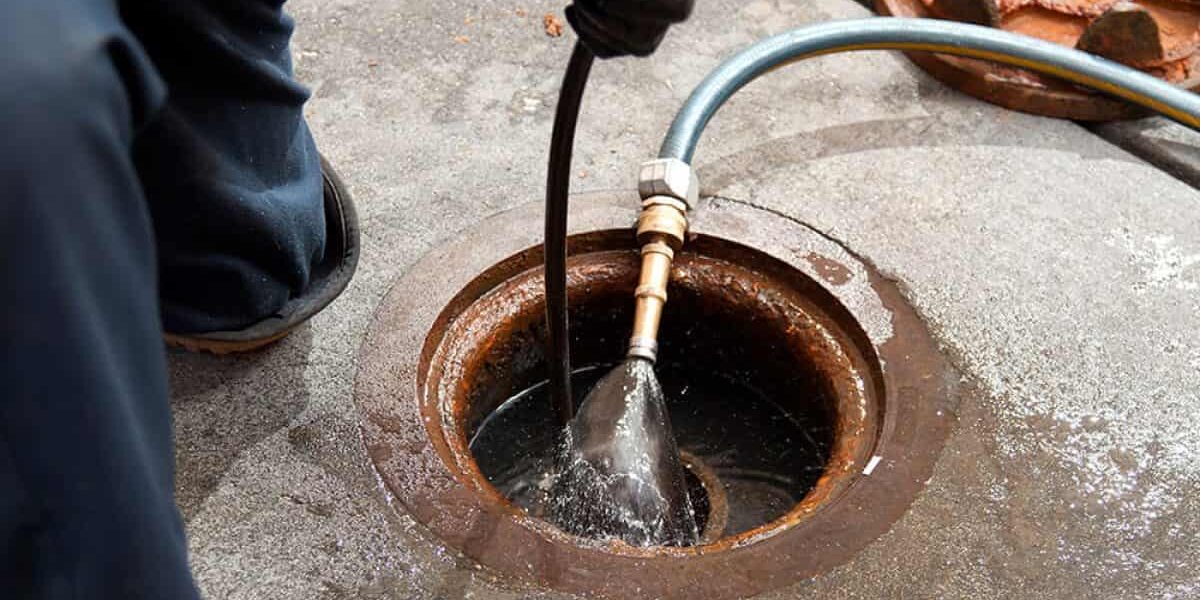This great article following next about How to handle a clogged drain in your home is indeed enlightening. Don't miss out on it.

Intro
Managing a blocked drain can be a discouraging experience, interfering with day-to-day activities and possibly triggering damage to your property. Nevertheless, before reaching out to pipes experts, there are steps you can require to attend to the issue on your own. In this overview, we'll explore DIY services and safety nets to take on an obstructed drainpipe successfully.
Identifying the Issue
The primary step in addressing an obstructed drainpipe is recognizing the signs. Slow-moving drain, gurgling noises, foul odors originating from drains, or water backing up are common indications of an obstructed drainpipe. Recognizing these indications early can help avoid additionally difficulties.
Choosing the Right Pipes Service
When choosing a plumbing service, take into consideration aspects such as experience, licensing, and customer evaluations. Select a reputable plumbing professional with a record of top quality handiwork and clear rates methods.
Expense Considerations
The expense of professional drainpipe cleaning company can vary depending upon the seriousness of the blockage and the plumbing's rates. Demand quotes from several providers and ask about any type of added fees to guarantee transparency and avoid shocks.
Safety and security Measures
When trying do it yourself drainpipe cleaning, prioritize safety and security. Put on protective handwear covers and glasses to stay clear of contact with harmful chemicals or microorganisms. Never ever mix various drainpipe cleansing items, as this can create unsafe fumes.
Instance Researches
Real-life instances illustrate the effectiveness of do it yourself solutions and the importance of prompt professional intervention in solving drainpipe blockages.
Usual Reasons For Blocked Drains
Recognizing the aspects that add to drain pipes obstructions is crucial for efficient resolution. Usual culprits include hair, soap residue, oil, food debris, and international items like sanitary items or paper towels. Tree origins attacking underground pipes can additionally trigger considerable blockages.
DIY Solutions
For minor blockages, several do it yourself services can be reliable. Putting boiling water down the drain can help dissolve grease and debris. Sodium bicarbonate and vinegar or a mixture of salt and baking soft drink can serve as natural cleaners. Using a plunger or pipes serpent to remove obstructions is an additional option.
Tools and Tools
Having the right devices handy can make do it yourself drain cleaning up extra reliable. A bettor is a versatile device for removing clogs in sinks, bathrooms, and showers. A pipes snake or auger can get to much deeper obstructions, while drainpipe cleansing chemicals can be used carefully for persistent obstructions.
Safety nets
To prevent future clogs, embracing preventive measures is essential. Install drain guards or strainers to capture hair and debris prior to they get in the pipelines. On a regular basis flush drains pipes with hot water to dissolve oil buildup, and prevent getting rid of grease or solid waste down the drain.
When to Call an Expert
While DIY services can settle minor blockages, specific indicators show the need for professional aid. Relentless obstructions, foul odors despite cleansing initiatives, or multiple drains backing up at the same time are warnings that necessitate expert treatment.
Verdict
By following the suggestions detailed in this guide, you can successfully tackle obstructed drains and protect against future plumbing issues. Whether selecting DIY solutions or looking for expert aid, punctual activity is key to maintaining a healthy and balanced plumbing system and maintaining the honesty of your home.
How to Clear a Clogged Drain Yourself (And When to Call In the Professionals)
What Can Clog a Drain
Dirt Skin flakes Hair Grease Soap scum Food Offset pipes Tree roots Small objects Mineral buildup DIY Tricks to Unclog a Drain
You can fix this! Once you have identified the source of the clog (or have a vague idea), you can try one or a combination of these fixes in order to clear your plumbing.
Wire Hanger or Snake
Untangle and clear out hair from a drainpipe with a homemade snake. Use a straightened-out wire hanger with a 90-degree angle hook to locate the clog and drag out any unwanted material.
Remember not to push the clog further down to where the wire hanger cannot reach! If you need to follow up with a plunger, give it a try. Your efforts might be more successful after it’s been wire-snaked.
If you want to get fancy and don’t have a wire hanger to spare, head to the store and pick up a hand-operated drain snake. You can get one for $10-$30. It may save you the hassle, and provide additional length to reach deep into the clogged pipe.
Plunger
A cup plunger has a suction cup attached to a wooden handle. The rubber creates a seal around the drain, and increases the pressure force of the plunger.
Plunge for 30-second increments to loosen the clog. This may need to be repeated over the course of 15-20 minutes. Once plunged, run the water to flush the remaining material out of the drain.
Remember– never use a plunger if you have used a chemical drain cleaner. These chemicals can splash up from the force of the plunger and cause serious injury or burns.
Boiling Water
Hot water can sometimes break up materials into a flushable amount. Dirt, grease, and soap buildup requires heat in order to unstick from surfaces.
Take your kitchen kettle and heat your water to a boil. Once it reaches a rolling boil, pour it directly down the drain into the blockage. Carefully follow with plunging, if necessary.
Don’t worry if this takes more than one try! It can often take multiple kettles and repeated plunging in order to clear a particularly stubborn clog.
Chemical Drain Cleaner
As a last resort, pick up a bottle of chemical drain cleaner. Drain-cleaning chemicals are potent, and not very good for the environment.
You may need to wear protective eyewear in gloves before handling your bottle of chemical drain cleaner. Follow the instructions printed on the bottle, and flush with water as soon as the instructions allow. Do not follow with plunging.
Baking Soda and Vinegar
As a safer alternative to chemical drain cleaner, baking soda and vinegar can create a chemical reaction that clears tough clogs.
Combine one cup of cleaning vinegar with one cup of boiling water, and set aside. Once you have done this, pour half a cup of baking soda down the drain. Give the baking thirty seconds to settle and cover a large portion of the problem drain.
Following the baking soda, pour down your vinegar and hot water solution. Once the vinegar and baking soda combine, the mixture will bubble and fix. Let this reaction fizzle in the drain for about an hour.
After an hour, follow with a kettle’s worth of hot water. The heat and liquid should flush out any remaining material.
When to Call a Plumber
If your DIY attempts haven’t cleared your clog drain, it’s time to call in a professional. It’s not worth losing access to your kitchen sink or high-traffic bathroom. A clog in a vital area can keep you from the things you’d rather be doing, and derail your routine.
Anytime a clog is causing water to spread is a time to call in a plumbing service. What starts out as a little bit of water can quickly grow into serious, expensive water damage.
Additionally, a serious clog can result in burst pipes or serious leaks. Make sure you know when to take it seriously!
https://myguysnow.com/how-to-clear-a-clogged-drain-yourself-and-when-to-call-in-the-professionals/

Hopefully you enjoyed our excerpt on . Thanks a ton for taking a few minutes to read our post. Do you know another individual who is excited by the subject? Feel free to promote it. We treasure reading our article about Tips for Dealing with Clogged Drains and Sewer Lines.
Click Here